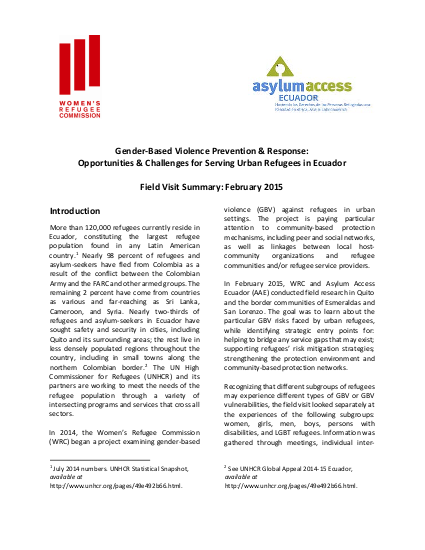Field Visit Summary

More than 120,000 refugees currently reside in Ecuador, constituting the largest refugee population found in any Latin American country. Nearly two-thirds of refugees and asylum-seekers have sought safety and security in cities.
Key Findings:
- Women, girls, men, boys, persons with disabilities, and LGBT refugees all preceived threats of GBV in different ways.
- Both refugee service providers and local community-based organizations expressed a desire to work together more closely. This is particularly true between refugee organizations and LGBT organizations.
- Refugees living in Quito reported feeling unsafe throughout the city, with youth feeling particularly vulnerable at school.
- Refugees interviewed further reported finding it next to impossible to find a job, let alone one where their rights are respected and they are treated with dignity.
- Layers of discrimination function as a catalysts for GBV: discrimination toward refugees in general is compounded by stereotypes of Colombian women and discrimination based on sexual orientation and gender identity and/or intellectual or physical disability.
Links
Resource collections
- Accountability to affected populations (AAP)
- Topics
- UN Habitat - Urban Response Collection
- Urban Response - Urban Crisis Preparedness and Risk Reduction
- Urban Response Collection - Community Engagement and Social Cohesion
- Urban Response Collection - Economic Recovery
- Urban Response Collection - Environment and Climate Change
- Urban Response Collection - Housing, Land and Property
- Urban Response Collection - Urban Crisis Response, Recovery and Reconstruction
- Urban Response Collection - Urban Resilience
